VIM教程 Learn Vim Progressively
2016-05-24 20:54
218 查看
VIM的英文教程资料

TL;DR: You want to teach yourself vim (the
best text editor known to human kind) in the fastest way possible. This is my way of doing it. You start by learning the minimal to survive, then you integrate all the tricks slowly.
Vim the Six Billion Dollar editor
Better, Stronger, Faster.
Learn vim and it will be your last text editor. There isn’t
any better text editor that I know of. It is hard to learn, but incredible to use.
I suggest you teach yourself Vim in 4 steps:
Survive
Feel comfortable
Feel Better, Stronger, Faster
Use superpowers of vim
By the end of this journey, you’ll become a vim superstar.
But before we start, just a warning. Learning vim will be painful at first. It will take time. It will be a lot like playing a musical instrument. Don’t expect to be more efficient with vim
than with another editor in less than 3 days. In fact it will certainly take 2 weeks instead of 3 days.
Install vim
Launch vim
DO NOTHING! Read.
In a standard editor, typing on the keyboard is enough to write something and see it on the screen. Not this time. Vim is in Normalmode. Let’s go to Insert mode.
Type the letter
You should feel a bit better. You can type letters like in a standard editor. To get back to Normal mode just press the
You now know how to switch between Insert and Normal mode. And now, here are the commands that you need in order
to survive inNormal mode:
Type
cursor
line
Recommended:
not mandatory) → basic cursor move (←↓↑→). Hint:
like a down arrow.
about
a
Only 5 commands. That is all you need to get started. Once these command start to become natural (maybe after a day or so), you should move on to level 2.
But first, just a little remark about Normal mode. In standard editors, to copy you have to use the
(
it is as if all of your keys change meaning. Using vim in normal mode is a bit like having the editor automatically press the
for you.
A last word about notations:
instead of writing
write
commands starting with
with
I write
You know the commands required for survival. It’s time to learn a few more commands. These are my suggestions:
Insert mode variations:
the current one
the current one
to the end of the word
Basic moves
character of the line
character of line
Copy/Paste
paste after current position.
easier but equivalent to
Undo/Redo
Load/Save/Quit/Change File (Buffer)
to
save and quit (
necessary)
quit even if there are modified hidden buffers.
→ show next (resp. previous) file (buffer)
Take the time to learn all of these command. Once done, you should be able to do every thing you are able to do in other editors. You may still feel a bit awkward. But follow me to the next
level and you’ll see why vim is worth the extra work.
Congratulation for reaching this far! Now we can start with the interesting stuff. At level 3, we’ll only talk about commands which are compatible with the old vi editor.
Let’s look at how vim could help you to repeat yourself:
N<command> → will repeat the command N times.
Some examples, open a file and type:
“desu desu desu desu desu desu desu desu desu desu desu desu desu desu desu desu desu desu desu desu desu desu desu desu desu desu desu desu desu desu desu desu desu desu desu desu desu desu desu desu desu desu desu desu desu desu desu desu desu desu desu
desu desu desu desu desu desu desu desu desu desu desu desu desu desu desu desu desu desu desu desu desu desu desu desu desu desu desu desu desu desu desu desu desu desu desu desu desu desu desu desu desu desu desu desu desu desu desu desu desu”
will write again the 100 “desu”.
not 300, how clever).
Knowing how to move efficiently with vim is very important. Don’t skip this section.
N
go to the start of the file
Word moves:
By default, words are composed of letters and the underscore character. Let’s call a WORD a group of letter separated by blank characters. If you want to consider WORDS, then just use uppercase
characters:

Now let’s talk about very efficient moves:
: go to next (resp. previous) occurrence of the word under the cursor
Believe me, the last three commands are gold.
Remember about the importance of vi moves? Here is the reason. Most commands can be used using the following general format:
For example :
line
We also can do things like
yank from here to the end of the word. But also
up to the second occurrence of “foo”.
But what was true for
is also true for
select),
etc…
With all preceding commands you should be comfortable using vim. But now, here are the killer features. Some of these features were the reason I started to use vim.
the line
on the line
the letter
will find the next (resp. previous) occurrence.
of
like
backward.

A useful tip is:
remove everything until the
These command can only be used after an operator in visual mode. But they are very powerful. Their main pattern is:
Where action can be any action, for example,
in visual mode). The object can be:
WORD (extended word),
paragraph. But also, natural character such as
Suppose the cursor is on the first
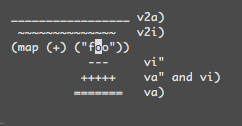
Rectangular blocks are very useful for commenting many lines of code. Typically:
character of the line
be
etc…)
comment each line
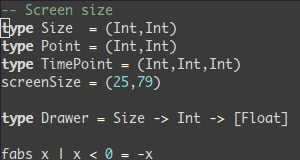
Note: in Windows you might have to use
of
In Insert mode, just type the start of a word, then type
magic…
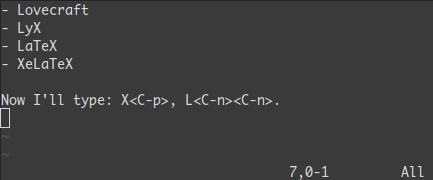
your actions in the register
Then
if you typed it.
last executed macro.
Example
On a line containing only the number 1, type this:
Now do
of increasing numbers until 103.
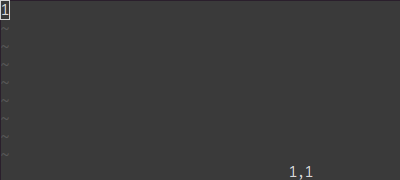
We saw an example with
There is also
Once the selection has been made, you can:
→ indent to the left (resp. to the right).
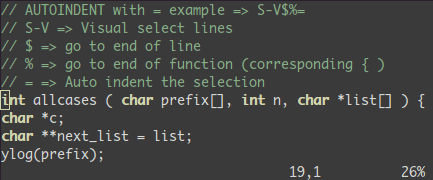
Add something at the end of all visually selected lines:
go to desired line (
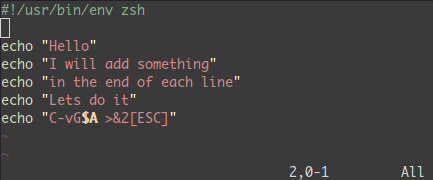
These are the most important commands, but you should look at
a vertical split)
of
: maximise the size of the split (resp. vertical split)
: Grow (resp. shrink) split
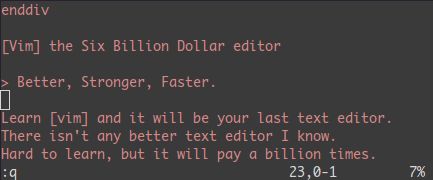
That was 90% of the commands I use every day. I suggest that you learn no more than one or two new commands per day. After two to three weeks you’ll start to feel the power of vim in your hands.
Learning Vim is more a matter of training than plain memorization. Fortunately vim comes with some very good tools and excellent documentation. Run vimtutor until you are familiar with most
basic commands. Also, you should read this page carefully:
Then, you will learn about
folds, registers, plugins and many other features. Learn vim like you’d learn piano and all should be fine.
转自:http://yannesposito.com/Scratch/en/blog/Learn-Vim-Progressively/
Learn Vim Progressively

TL;DR: You want to teach yourself vim (the
best text editor known to human kind) in the fastest way possible. This is my way of doing it. You start by learning the minimal to survive, then you integrate all the tricks slowly.
Vim the Six Billion Dollar editor
Better, Stronger, Faster.
Learn vim and it will be your last text editor. There isn’t
any better text editor that I know of. It is hard to learn, but incredible to use.
I suggest you teach yourself Vim in 4 steps:
Survive
Feel comfortable
Feel Better, Stronger, Faster
Use superpowers of vim
By the end of this journey, you’ll become a vim superstar.
But before we start, just a warning. Learning vim will be painful at first. It will take time. It will be a lot like playing a musical instrument. Don’t expect to be more efficient with vim
than with another editor in less than 3 days. In fact it will certainly take 2 weeks instead of 3 days.
1st Level – Survive
Install vimLaunch vim
DO NOTHING! Read.
In a standard editor, typing on the keyboard is enough to write something and see it on the screen. Not this time. Vim is in Normalmode. Let’s go to Insert mode.
Type the letter
i.
You should feel a bit better. You can type letters like in a standard editor. To get back to Normal mode just press the
ESCkey.
You now know how to switch between Insert and Normal mode. And now, here are the commands that you need in order
to survive inNormal mode:
i→ Insert mode.
Type
ESCto return to Normal mode.
x→ Delete the char under the
cursor
:wq→ Save and Quit (
:wsave,
:qquit)
dd→ Delete (and copy) the current
line
p→ Paste
Recommended:
hjkl(highly recommended but
not mandatory) → basic cursor move (←↓↑→). Hint:
jlooks
like a down arrow.
:help <command>→ Show help
about
<command>. You can use
:helpwithout
a
<command>to get general help.
Only 5 commands. That is all you need to get started. Once these command start to become natural (maybe after a day or so), you should move on to level 2.
But first, just a little remark about Normal mode. In standard editors, to copy you have to use the
Ctrlkey
(
Ctrl-cgenerally). In fact, when you press
Ctrl,
it is as if all of your keys change meaning. Using vim in normal mode is a bit like having the editor automatically press the
Ctrlkey
for you.
A last word about notations:
instead of writing
Ctrl-λ, I’ll
write
<C-λ>.
commands starting with
:end
with
<enter>. For example, when
I write
:q, I mean
:q<enter>.
2nd Level – Feel comfortable
You know the commands required for survival. It’s time to learn a few more commands. These are my suggestions:Insert mode variations:
a→ insert after the cursor
o→ insert a new line after
the current one
O→ insert a new line before
the current one
cw→ replace from the cursor
to the end of the word
Basic moves
0→ go to the first column
^→ go to the first non-blank
character of the line
$→ go to the end of line
g_→ go to the last non-blank
character of line
/pattern→ search for
pattern
Copy/Paste
P→ paste before, remember
pis
paste after current position.
yy→ copy the current line,
easier but equivalent to
ddP
Undo/Redo
u→ undo
<C-r>→ redo
Load/Save/Quit/Change File (Buffer)
:e <path/to/file>→ open
:w→ save
:saveas <path/to/file>→ save
to
<path/to/file>
:x,
ZZor
:wq→
save and quit (
:xonly save if
necessary)
:q!→ quit without saving, also:
:qa!to
quit even if there are modified hidden buffers.
:bn(resp.
:bp)
→ show next (resp. previous) file (buffer)
Take the time to learn all of these command. Once done, you should be able to do every thing you are able to do in other editors. You may still feel a bit awkward. But follow me to the next
level and you’ll see why vim is worth the extra work.
3rd Level – Better. Stronger. Faster.
Congratulation for reaching this far! Now we can start with the interesting stuff. At level 3, we’ll only talk about commands which are compatible with the old vi editor.
Better
Let’s look at how vim could help you to repeat yourself:.→ (dot) will repeat the last command,
N<command> → will repeat the command N times.
Some examples, open a file and type:
2dd→ will delete 2 lines
3p→ will paste the text 3 times
100idesu [ESC]→ will write
“desu desu desu desu desu desu desu desu desu desu desu desu desu desu desu desu desu desu desu desu desu desu desu desu desu desu desu desu desu desu desu desu desu desu desu desu desu desu desu desu desu desu desu desu desu desu desu desu desu desu desu
desu desu desu desu desu desu desu desu desu desu desu desu desu desu desu desu desu desu desu desu desu desu desu desu desu desu desu desu desu desu desu desu desu desu desu desu desu desu desu desu desu desu desu desu desu desu desu desu desu”
.→ Just after the last command
will write again the 100 “desu”.
3.→ Will write 3 “desu” (and
not 300, how clever).
Stronger
Knowing how to move efficiently with vim is very important. Don’t skip this section.N
G→ Go to line N
gg→ shortcut for
1G-
go to the start of the file
G→ Go to last line
Word moves:
w→ go to the start of the following word,
e→ go to the end of this word.
By default, words are composed of letters and the underscore character. Let’s call a WORD a group of letter separated by blank characters. If you want to consider WORDS, then just use uppercase
characters:
W→ go to the start of the following WORD,
E→ go to the end of this WORD.

Now let’s talk about very efficient moves:
%: Go to the corresponding
(,
{, [.
*(resp.
#)
: go to next (resp. previous) occurrence of the word under the cursor
Believe me, the last three commands are gold.
Faster
Remember about the importance of vi moves? Here is the reason. Most commands can be used using the following general format:<start position><command><end position>
For example :
0y$means
0→ go to the beginning of this
line
y→ yank from here
$→ up to the end of this line
We also can do things like
ye,
yank from here to the end of the word. But also
y2/fooyank
up to the second occurrence of “foo”.
But what was true for
y(yank),
is also true for
d(delete),
v(visual
select),
gU(uppercase),
gu(lowercase),
etc…
4th Level – Vim Superpowers
With all preceding commands you should be comfortable using vim. But now, here are the killer features. Some of these features were the reason I started to use vim.
Move on current line: 0
^
$
g_
f
F
t
T
,
;
0→ go to column 0
^→ go to first character on
the line
$→ go to the last column
g_→ go to the last character
on the line
fa→ go to next occurrence of
the letter
aon the line.
,(resp.
;)
will find the next (resp. previous) occurrence.
t,→ go to just before the character
,.
3fa→ find the 3rd occurrence
of
aon this line.
Fand
T→
like
fand
tbut
backward.

A useful tip is:
dt"→
remove everything until the
".
Zone selection <action>a<object>
or<action>i<object>
These command can only be used after an operator in visual mode. But they are very powerful. Their main pattern is:<action>a<object>and
<action>i<object>
Where action can be any action, for example,
d(delete),
y(yank),
v(select
in visual mode). The object can be:
wa word,
Wa
WORD (extended word),
sa sentence,
pa
paragraph. But also, natural character such as
",
',
),
},
].
Suppose the cursor is on the first
oof
(map
(+) ("foo")).vi"→ will select
foo.
va"→ will select
"foo".
vi)→ will select
"foo".
va)→ will select
("foo").v2i)→ will select
map
(+) ("foo")v2a)→ will select
(map
(+) ("foo"))
Select rectangular blocks: <C-v>
.
Rectangular blocks are very useful for commenting many lines of code. Typically: 0<C-v><C-d>I-- [ESC]
^→ go to the first non-blank
character of the line
<C-v>→ Start block selection
<C-d>→ move down (could also
be
jjjor
%,
etc…)
I-- [ESC]→ write
--to
comment each line

Note: in Windows you might have to use
<C-q>instead
of
<C-v>if your clipboard is not empty.
Completion: <C-n>
and <C-p>
.
In Insert mode, just type the start of a word, then type <C-p>,
magic…

Macros : qa
do something q
, @a
, @@
qarecord
your actions in the register
a.
Then
@awill replay the macro saved into the register
aas
if you typed it.
@@is a shortcut to replay the
last executed macro.
Example
On a line containing only the number 1, type this:
qaYp<C-a>q→
qastart recording.
Ypduplicate this line.
<C-a>increment the number.
qstop recording.
@a→ write 2 under the 1
@@→ write 3 under the 2
Now do
100@@will create a list
of increasing numbers until 103.

Visual selection: v
,V
,<C-v>
We saw an example with <C-v>.
There is also
vand
V.
Once the selection has been made, you can:
J→ join all the lines together.
<(resp.
>)
→ indent to the left (resp. to the right).
=→ auto indent

Add something at the end of all visually selected lines:
<C-v>
go to desired line (
jjjor
<C-d>or
/patternor
%etc…)
$go to the end of the line
A, write text,
ESC.

Splits: :split
and vsplit
.
These are the most important commands, but you should look at :help split.
:split→ create a split (
:vsplitcreate
a vertical split)
<C-w><dir>: where dir is any
of
hjklor ←↓↑→ to change the split.
<C-w>_(resp.
<C-w>|)
: maximise the size of the split (resp. vertical split)
<C-w>+(resp.
<C-w>-)
: Grow (resp. shrink) split

Conclusion
That was 90% of the commands I use every day. I suggest that you learn no more than one or two new commands per day. After two to three weeks you’ll start to feel the power of vim in your hands.Learning Vim is more a matter of training than plain memorization. Fortunately vim comes with some very good tools and excellent documentation. Run vimtutor until you are familiar with most
basic commands. Also, you should read this page carefully:
:help usr_02.txt.
Then, you will learn about
!,
folds, registers, plugins and many other features. Learn vim like you’d learn piano and all should be fine.
转自:http://yannesposito.com/Scratch/en/blog/Learn-Vim-Progressively/
相关文章推荐
- 数据结构----快速排序
- Java之3.Math类、Date、SimpleDateFormat
- 关于SLAM的那些事——实时RGBD_ORB_SLAM (Ubuntu+Xtion)
- poj 2109
- 赫夫曼树
- javascript之DOM编程增加附件
- [Codeforces226D]The table(构造+贪心)
- Android四大组件(1.2)--Activity的启动模式
- ZOJ 3822 Domination(概率DP)
- Android各层日志打印功能
- javascript之DOM编程增加附件
- Spring单例模式与线程安全
- 第二次冲刺周期06
- Android实现双击事件的两种方式
- putty显示乱码解决方法
- HDU 5699 (线性规划 二分)
- Cookie详解
- Poj 1856 Sea Battle【Dfs+思维】
- ZOJ 3819 Average Score
- SDAU练习三1018
